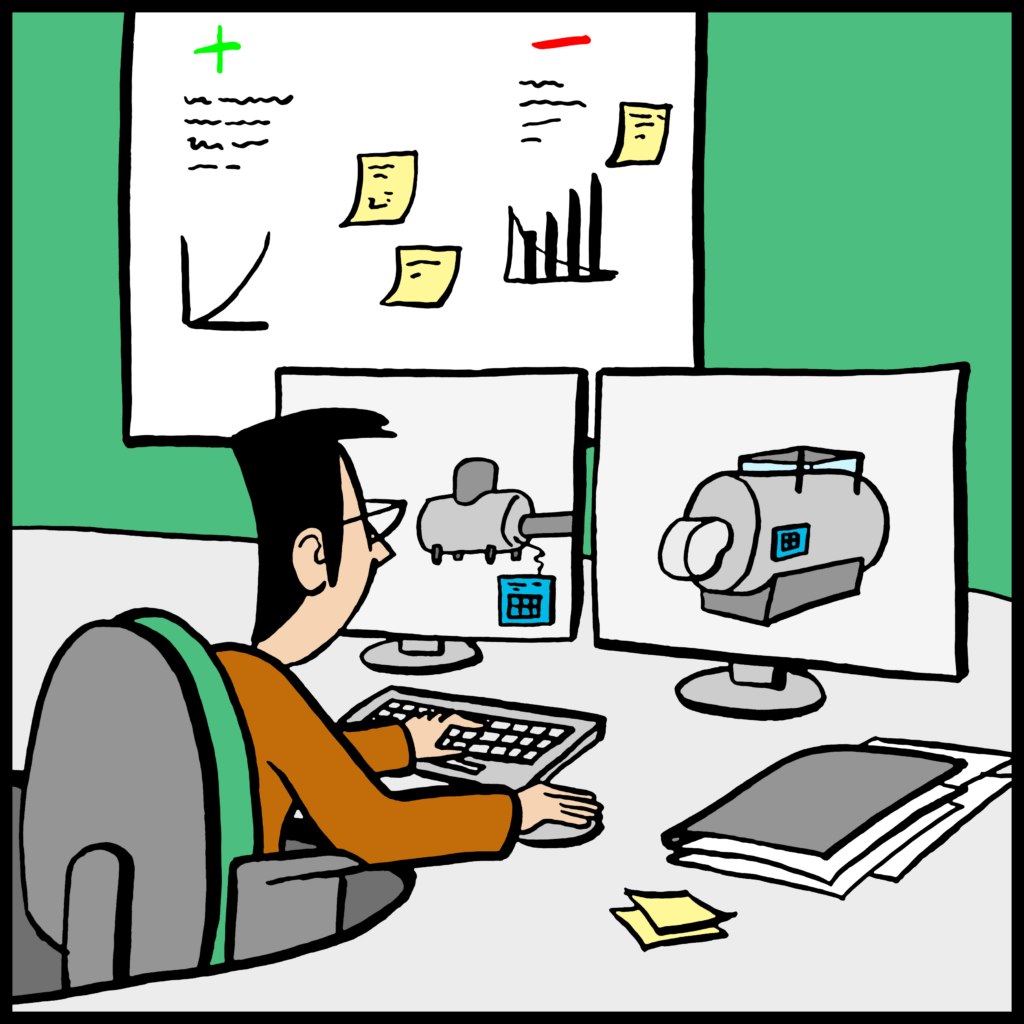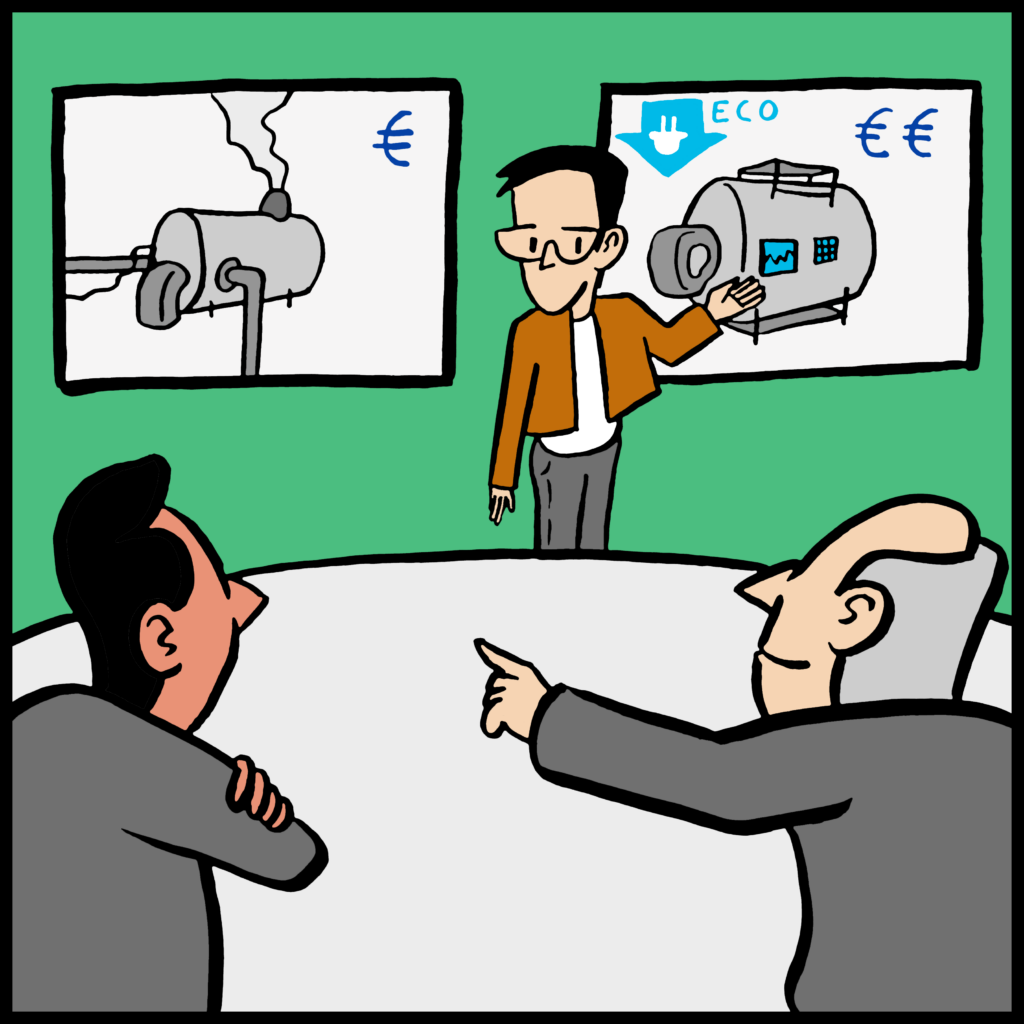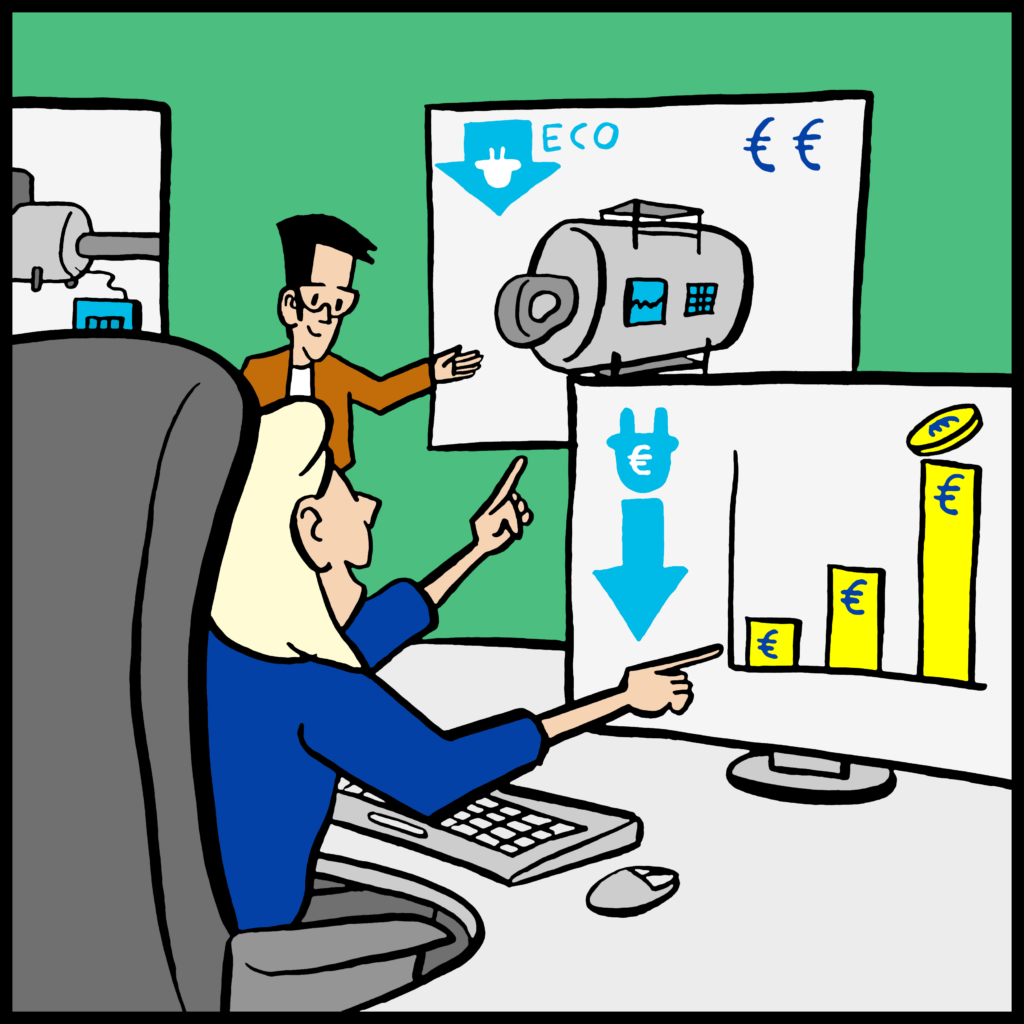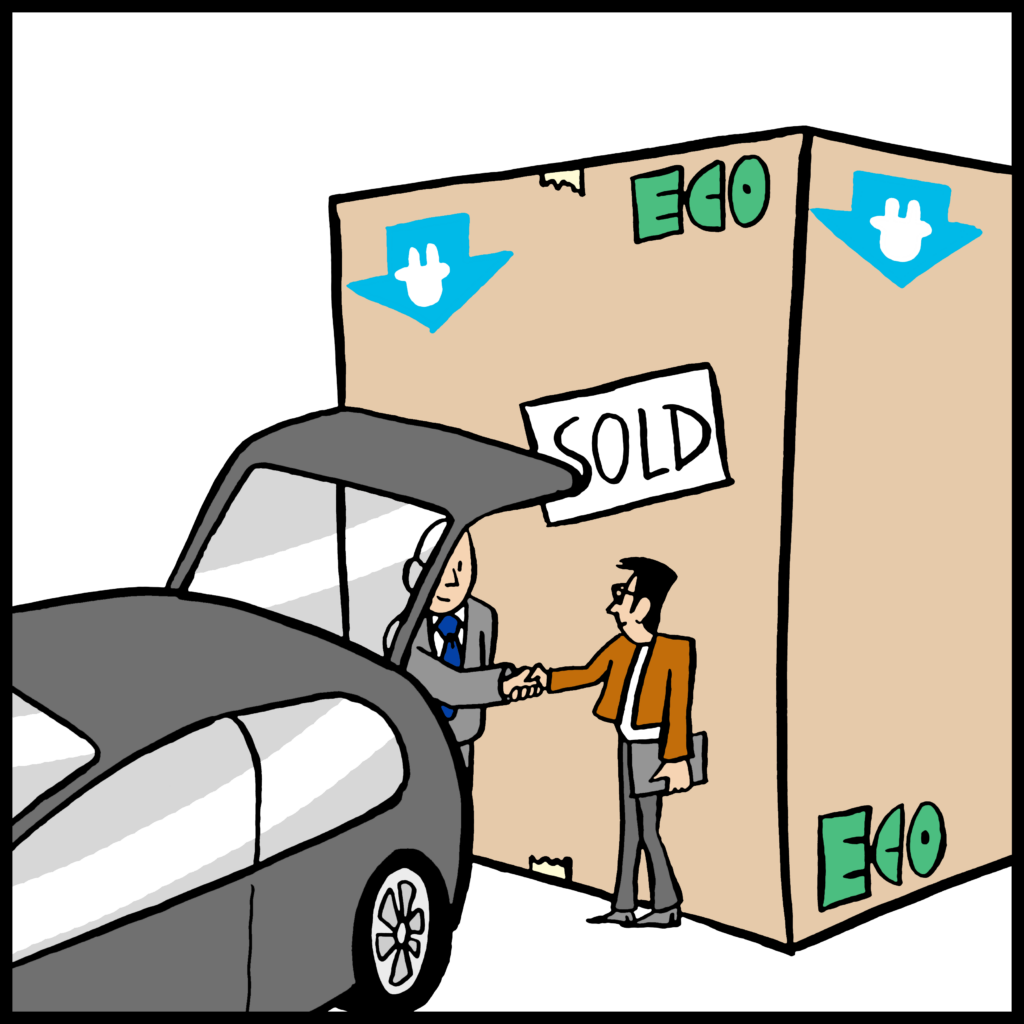This journey aims to illustrate the internal processes of the end-client. It emphasizes the importance of having management ambition and management support. This real-life example revolves around a process engineer who disagrees with his direct supervisor. As the process engineer understands the decision making structure, he is able to reach out to a higher level (CEO) and gain support for his initiative. Knowing who within the company influences the decision making process is important for internal projects, but is also relevant for external parties. For an energy service supplier to be persuasive, it is necessary to be able to identify this decision making unit and ensure the ability to persuade them with their ‘green proposition’.
Context
- The company produces consumer fluids. It experiences strong market competition driven by cost efficiency.
- The company has sustainability targets on waste and energy efficiency of gas and electricity. The waste and energy use should be reduced by 20 to 30% in 2021. And the company wants to be energy neutral in 2035. It does not have a clear implementation plan to achieve the sustainability ambitions.
- The company does not have a R&D department, and is aware of its need for energy efficiency knowledge.

Phase 1: Awareness & motivation
- The steam boiler at one of the locations reaches the end of its product life span and needs replacement.
- There are no instruments in place to monitor how much energy is spent in processes/machinery.

Phase 2: Market orientation
- Pete, head technician, leads the market orientation for a new steam boiler, and searches for the best steam boiler to buy. Pete searches for reliable information within his network.
- Without knowing the exact energy use of the current steam boiler, he knows that it is very high for these types of boilers.
- Pete is intrinsically motivated to act on sustainability issues. For example, Pete takes steps to make his home more sustainable.

Phase 3: Choosing a solution
- In a meeting with Ralph, the location manager, Pete pitches one of the most energy efficient alternatives for the steam boiler that will reduce the gas usage by 30%. The price of the steam boiler is more expensive than less energy efficient alternatives.
- Due to the longer pay-back period, Ralph does not give the mandate to Pete to pursue with the purchase of the more expensive, but more energy efficient steam boiler. The company is used to a standard pay-back period of 4 years.
- Pete is convinced the energy efficient steam boiler is the better option. He thinks middle and higher management should support his proactive stance to actually reach the sustainability ambition of the company to become energy neutral in 2035. Therefore, Pete approaches the CEO, Karen, with the idea of the steam boiler, thereby surpassing Ralph, his direct supervisor.

Phase 4: Decision making
- Karen (the CEO) understands more arguments can be used next to the length of the pay-back period which will contribute to the sustainability goals of the company. For example, the increased life expectancy of the steam boiler, cost reductions due to a smaller energy bill and reduced energy usage. Combined, this makes the more energy efficient steam boiler more attractive. Karen opts for the more energy efficient boiler because of the research Pete (head technician) has done.

Phase 5: Financing
- The new steam boiler is implemented.

Phase 6: Installation
- The new steam boiler is implemented.